Tripe Fungus
An inedible relative of our Jelly Ear. From the top, it might remind you of Turkey Tail, but once you have checked its underneath, everything becoming clear.
| Mushroom Type | |
| Common Names | Tripe Fungus (EN), Clustiau'r Llwyfen (CY), Uszak Skórnikowaty (PL), Szalagos Fülgomba (HU) |
| Scientific Name | Auricularia mesenterica |
| Season Start | All Year |
| Season End | All Year |
| Average Mushroom height (CM) | |
| Average Cap width (CM) | 1–3 |
Fruiting Body
1–3 cm across. The fruiting body is ear shaped, often resupinate (covers the substrate without forming a cap) or semi-resupinate (only forms a small cap), often forms fused-emerged big patches on the substrate.
Upper surface is irregular, wavy or lobed, hairy (often covered with algae) and zonated. Its margin is grey-white, the concentric zones are reddish-brown, grey, ochre and/or white in colour.
Gills
Does not have gills. The fertile (under) surface is smooth when young, becoming wrinkled or vein-like with age. Whitish or pale grey at first, darkening to reddish-brown when mature.
Flesh
Thin, gelatinous, soft when young and moist, becoming tough and somewhat brittle with age.
Habitat
Saprotrophic, causing white-rot. Growing on dead wood and stumps of various hardwood genera the whole year long if the environmental conditions are right, but in the UK the most common substrates are Elm and Beech. The individual fruit bodies often emerge and form a big patch of tripe fungus on its substrate.
Possible Confusion
Jelly Ear (Auricularia auricula-judae), has smooth, faintly hairy skin, concolorous with its fertile underside.
Turkey Tail (Trametes versicolor), pictured, has a rather similarly zonated top, but has less hairy skin, and has a white pore surface.
Crusts (Stereum spp.) have thin, leathery flesh and their fertile underside is never wrinkled or vein-like.
Spore Print
Spore print is white. Spores are cylindrical, colourless (hyaline), smooth with drops.
Taste / Smell
Inedible, smell and taste not distinctive.
Frequency
Frequent and widespread on the British Isles. Fruiting everywhere with enough decaying hardwood, e.g., parklands, woodlands, gardens, etc.
Other Facts
The genus name, Auricularia, refers to the ear shape of the species within the genus. The epithet (the 2nd part of the scientific name which identifies the species within the genus) mesenterica has Greek origin (mesenterion or μεσεντέριον) and refers to the ‘middle of the intestine’ or tripe.



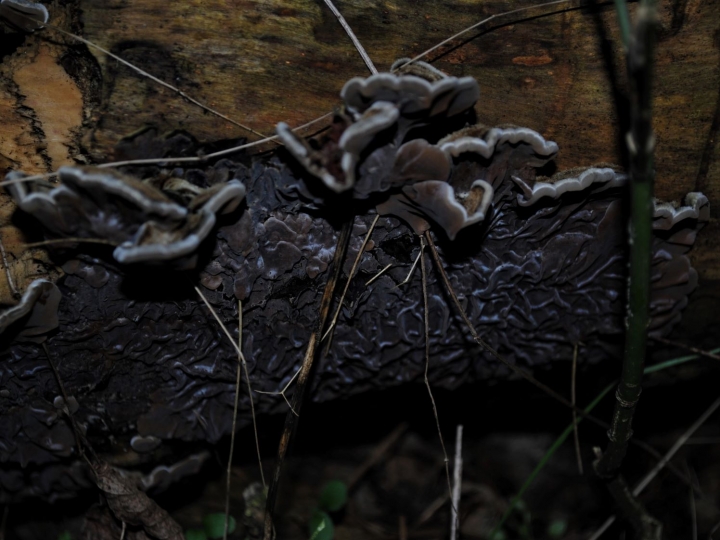
















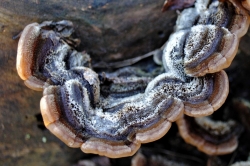
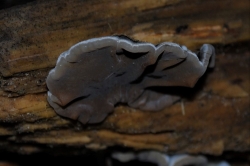
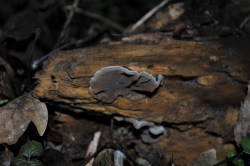
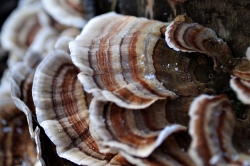



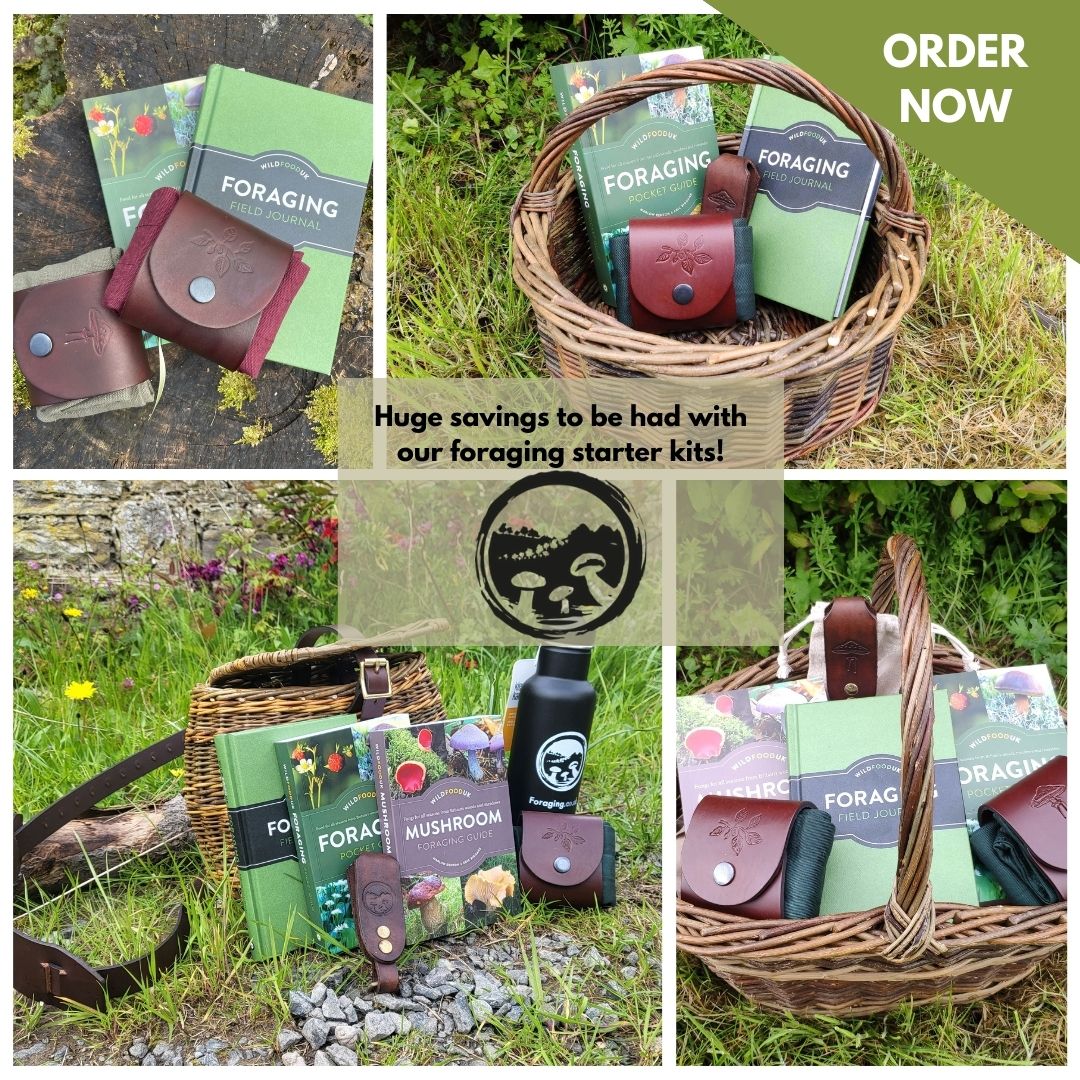

COMMENTS